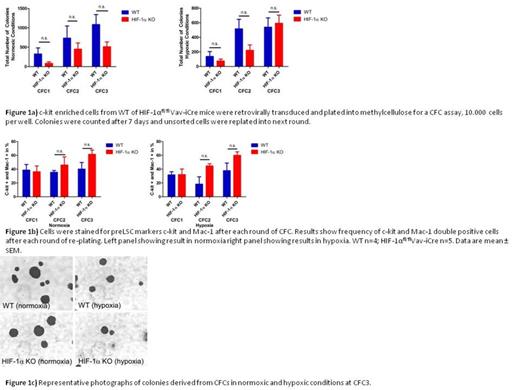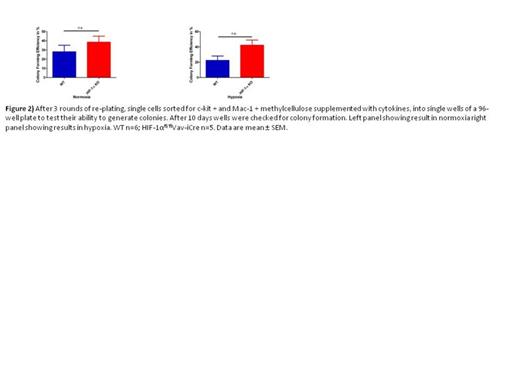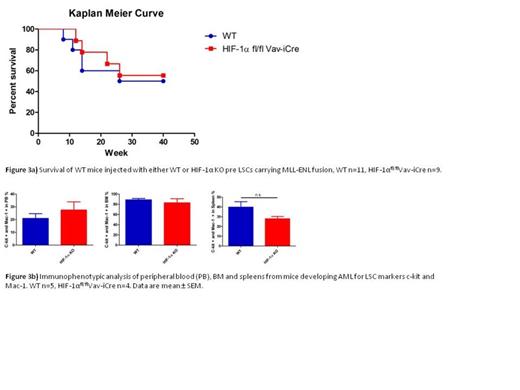Abstract
Haematopoietic stem cells (HSCs) reside in hypoxic niches in the bone marrow (BM) and sustain long-life haematopoiesis. HSCs are largely quiescent, self-renew, undergo apoptosis and generate progenitor cells, which differentiate to multiple blood lineages. The strict regulation of the balance between these fate decisions is essential for haematopoiesis and their dysregulation in HSCs and progenitor cells can result in leukaemic transformation. HSCs and leukemic stem cells (LSCs) are suggested to share the same niche and are in need to adapt to hypoxic conditions.
Hypoxia-inducible-factor-1α (HIF-1α) is a key mediator of cellular responses to hypoxia and is important for the maintenance of HSC functions under stressful conditions. Furthermore, in chronic myeloid leukaemia (CML) and acute myeloid leukaemia (AML) HIF-1α is essential for LSC maintenance and ablation or knockdown of HIF-1α leads to exhaustion of established LSCs. The aim of this study was to investigate the requirement for HIF-1α in the generation of pre-LSCs and the establishment of LSCs.
In conclusion, we provide genetic evidence that HIF-1α is dispensable for the generation of pre-LSCs and the establishment of LSCs from pre-LSCs. These surprising findings, together with published results indicating that HIF-1α is essential for maintenance of LSCs, imply that HIF-1α has different roles at different stages of leukaemic transformation. Further studies are required to explain the distinct roles of HIF-1α in different stages of leukaemogenesis.
Ratcliffe:RedOx: Founder Other. Holyoake:Novartis: Membership on an entity’s Board of Directors or advisory committees; Bristol Myers Squibb: Membership on an entity’s Board of Directors or advisory committees; Ariad: Membership on an entity’s Board of Directors or advisory committees.
Author notes
Asterisk with author names denotes non-ASH members.




This feature is available to Subscribers Only
Sign In or Create an Account Close Modal